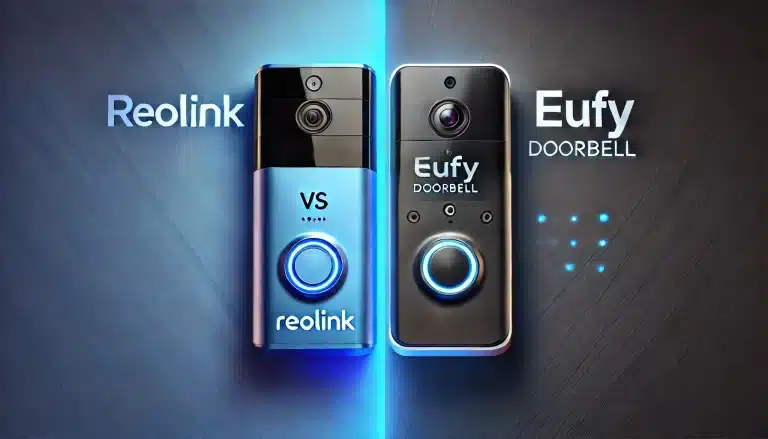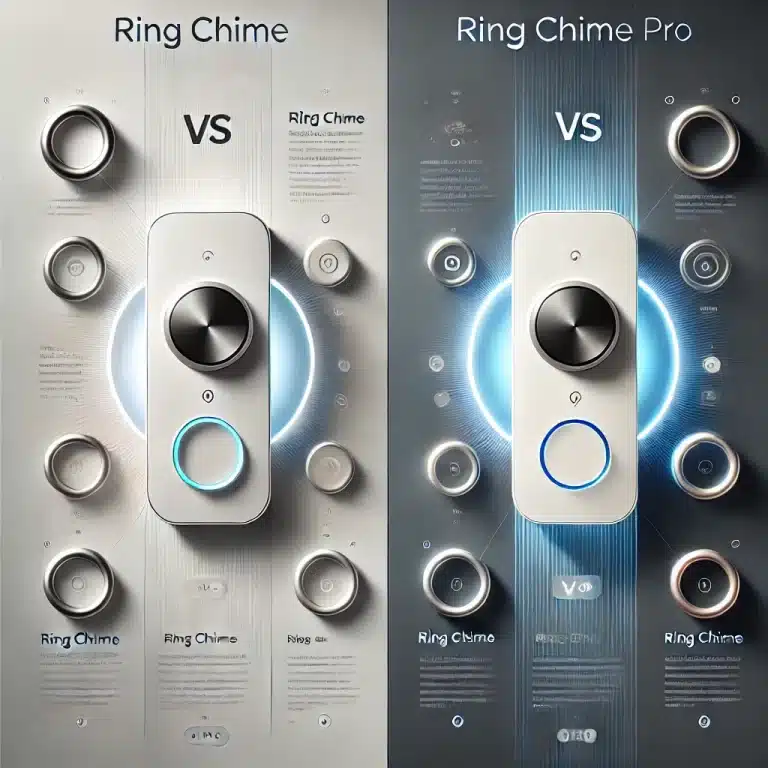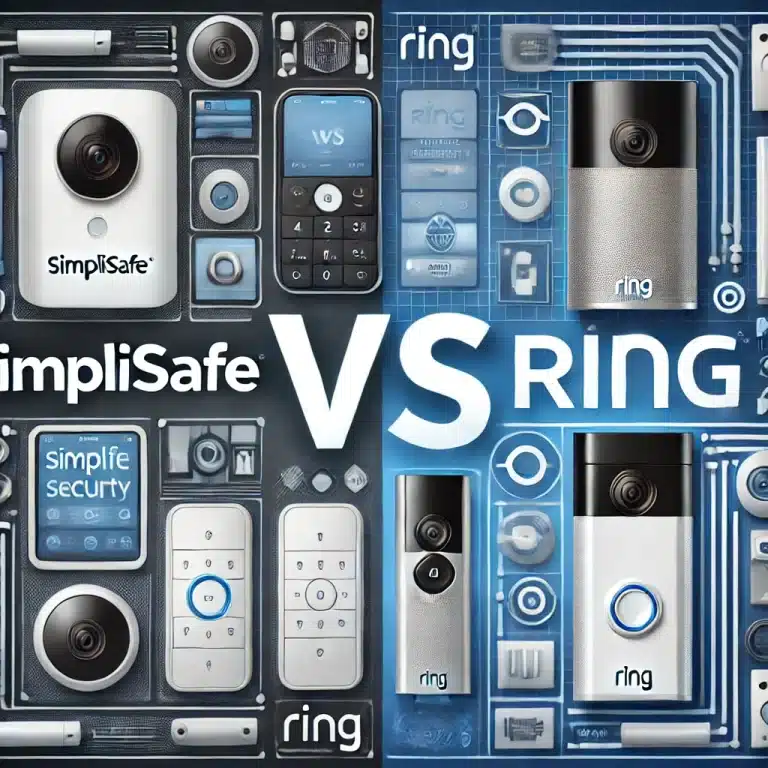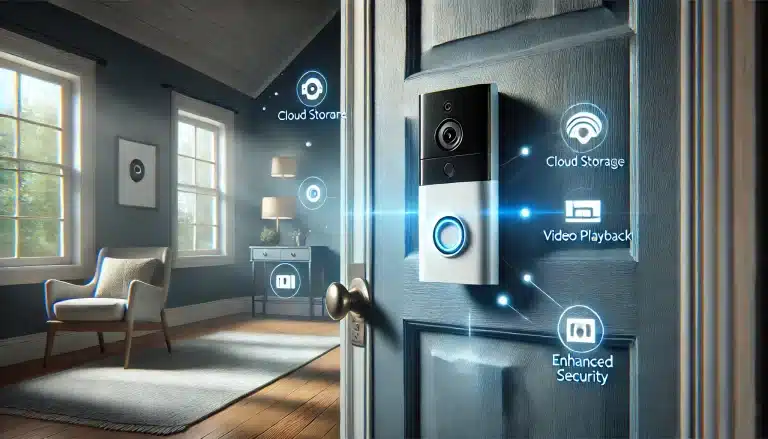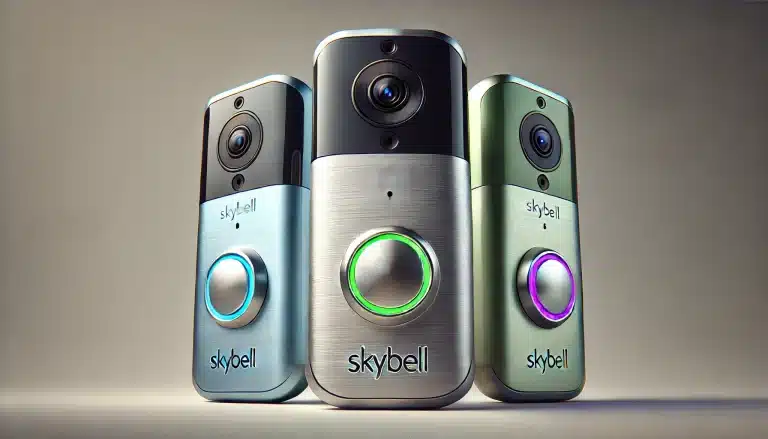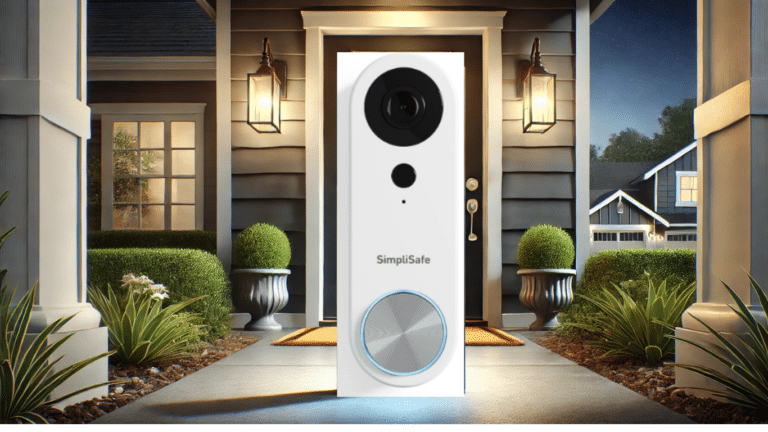Best Settings for a Battery-Powered Video Doorbell
If you’ve ever had your battery-powered video doorbell die at the worst possible time—like when you’re expecting an important delivery—you know how frustrating it can be.
While these smart devices offer great convenience and security, they also come with the hassle of recharging. The good news about the best video doorbell is that it can enhance your home security. With the right settings and habits, you can significantly extend the battery life of your video doorbell and avoid constant recharges.
In this guide, I’ll walk you through everything I’ve learned about keeping a battery-powered video doorbell running efficiently.
From understanding how these devices work to adjusting motion sensitivity and video quality on your Nest Doorbell, I’ll share practical tips to help you get the most out of your doorbell’s battery. Let’s dive in!
How Does a Video Doorbell Work?
I remember the first time I installed a video doorbell—I thought it was just a fancy upgrade to my old chime. Turns out, these little gadgets are packed with technology that goes far beyond a simple “ding-dong.” A video doorbell is essentially a mini security camera with a motion sensor, two-way audio, and sometimes even AI-powered detection.
Understanding Doorbell Cameras
At its core, a video doorbell captures video footage whenever motion is detected or when someone presses the button. Some models store recordings on the cloud, while others use local storage like microSD cards. Features like night vision, facial recognition, and package detection are now common in high-end models, making them a solid investment for home security.
The Role of Wireless Technology
Most modern doorbells use Wi-Fi to send footage and alerts to your phone. A strong and stable Wi-Fi connection is crucial because if your signal is weak, your doorbell might miss motion events or have delayed notifications. I learned this the hard way when I kept missing delivery notifications—turns out my Ring Doorbell was too far from the router. A quick fix? A Wi-Fi extender near the front door.
Wired vs. Wireless Doorbell Options
Wired and wireless doorbells both have pros and cons. Wired models connect to your existing doorbell wiring, offering a constant power source but requiring installation. Wireless models, on the other hand, are battery-powered and easier to install but require regular recharging. If you don’t want to deal with battery issues, a wired option might be best. But if drilling holes isn’t an option, a battery-powered doorbell with optimized settings can still be a great choice.
What Affects Battery Life in a Battery-Powered Doorbell?
After my first few weeks with a wireless video doorbell, I quickly realized that battery life isn’t as straightforward as manufacturers claim. “Up to six months of battery life” sounded great, but in reality, I was recharging every six weeks. Why? Several factors play into battery drain, and understanding them can help you extend the time between charges.
Factors Influencing Battery Performance
Your video doorbell’s battery life depends on:
- Motion detection frequency – If your door faces a busy street, the video doorbell camera is going to record a lot, draining the battery faster.
- Video quality settings – Higher resolution video eats up more power.
- Temperature extremes – Cold weather can reduce battery efficiency by up to 50%.
Common Issues with Battery Doorbells
One mistake I made? Leaving my doorbell’s default settings on. It was recording every tiny movement, including the neighbor’s dog running around. Reducing motion sensitivity and setting activity zones helped significantly. Another issue with the video doorbell camera is Wi-Fi connectivity. If your doorbell struggles to stay connected, it drains battery faster as it constantly tries to reconnect.
How Usage Patterns Impact Battery Life
If you’re someone who constantly checks the live feed (like I did at first), expect to drain your battery fast. Each time you activate the camera, it uses power. Also, if you have smart home integrations—like linking your doorbell to Alexa or Google Assistant—it may increase battery drain due to constant communication between devices.
How to Extend the Battery Life of Your Smart Doorbell?
If you’ve ever had your video doorbell die at the worst possible time—like when you’re expecting a package—you know how frustrating battery-powered models can be. When I first installed my Ring Doorbell, I thought I’d only have to charge it once every few months. But nope. I found myself dragging out the charger for my Ring Doorbell way too often. Turns out, a few simple tweaks can make a huge difference in extending the battery life of your smart doorbell.
Optimal Settings for Your Doorbell Camera
The first thing I learned? The default settings on most video doorbells, like the Ring Doorbell, are not optimized for battery life. They’re set to capture every motion, every shadow, every leaf blowing in the wind. While that’s great for security, the Ring battery drains fast.
Here’s what worked for me:
- Adjust motion sensitivity – Lower the sensitivity so it only records people, not stray cats or passing cars.
- Set activity zones – Most smart doorbells let you define specific areas to monitor. Focusing only on your walkway or porch means fewer unnecessary recordings.
- Reduce recording length – Instead of capturing 60 seconds of footage per motion event with your doorbell plus, reduce it to 20-30 seconds. Shorter clips save battery while still giving you the necessary footage.
Managing Video Quality and Storage
I was tempted to keep my doorbell set to the highest video quality because, well, who doesn’t want crystal-clear footage? But after seeing how fast it drained my battery, I had to compromise.
Most doorbells let you choose between 1080p and 720p recording. Unless you really need high-def for some reason, switching to 720p can extend battery life significantly. Also, some models offer a feature that lets you adjust how often the camera uploads footage to cloud storage. If your doorbell supports it, set it to upload less frequently to conserve battery power.
Best Practices for Battery Maintenance
Even with the best settings, battery health matters. I learned this the hard way when my doorbell’s battery life got worse over time. Here are some tips to keep it in top shape:
- Charge it properly – Avoid letting the battery drain completely before recharging. Lithium-ion batteries last longer when kept between 20%-80% charge.
- Keep it out of extreme temperatures – If your doorbell plus is exposed to direct sunlight or freezing weather, the battery will degrade faster. If possible, install it in a shaded spot or use a weather-resistant cover.
- Turn off unnecessary features – Some doorbells have extras like continuous live view, but these can drain your battery quickly. Turn off unnecessary features on your doorbell pro unless you really need them.
Final Thoughts
A little trial and error goes a long way when it comes to maximizing battery life. By tweaking your settings, reducing video quality, and maintaining your battery properly, you can go months without having to recharge. Trust me, once you stop constantly worrying about your doorbell dying, it’s a game-changer!
Frequently Asked Questions (FAQs)
- How long does the battery last on a video doorbell?
- Battery life varies by model, but most battery-powered video doorbells last between 3 to 6 months on a full charge, depending on usage and settings.
- What affects my video doorbell’s battery life the most?
- Frequent motion detection, high video resolution, extreme weather, and weak Wi-Fi signals are the biggest factors that drain battery life.
- Can extreme weather impact my doorbell’s battery?
- Yes, cold temperatures can slow battery performance, while excessive heat can cause faster degradation.
- How often should I recharge my battery-powered doorbell?
- On average, every 2 to 6 months, depending on your usage and environmental conditions.
- Does video quality affect battery life?
- Yes, recording in 1080p or higher resolution consumes more power than lower quality settings like 720p.
- Will a weak Wi-Fi signal drain my battery?
- Absolutely. If your doorbell struggles to stay connected, it will use more power trying to reconnect repeatedly.
- Should I turn off motion detection to save battery?
- Not necessarily, but lowering sensitivity and setting activity zones can help conserve battery life.
- Can I replace my video doorbell’s battery?
- Some models, like the Ring Video Doorbell 3, have removable batteries, while others require you to remove the unit to recharge.
- How do I know if my battery needs replacement?
- If your battery drains significantly faster than before or struggles to hold a charge, it might be time for a replacement.
- Are wired doorbells better than battery-powered ones?
- Wired models provide a continuous power source, but battery-powered models offer easier installation and flexibility.
- How can I optimize my doorbell’s motion detection settings?
- Use activity zones to limit unnecessary motion alerts and reduce motion sensitivity if possible.
- Do smart home integrations with the doorbell pro drain battery?
- Yes, linking your doorbell to Alexa, Google Assistant, or other smart devices can slightly reduce battery life.
- What’s the best way to charge my video doorbell?
- Use the manufacturer’s recommended charger and avoid draining the battery completely before recharging.
- Are there solar charging options for video doorbells?
- Yes, some brands offer solar panels that can keep your doorbell charged longer without frequent manual charging.
- How do I extend my video doorbell’s battery life the longest?
- Reduce motion sensitivity, adjust video quality, ensure a strong Wi-Fi connection, and avoid extreme weather exposure.


